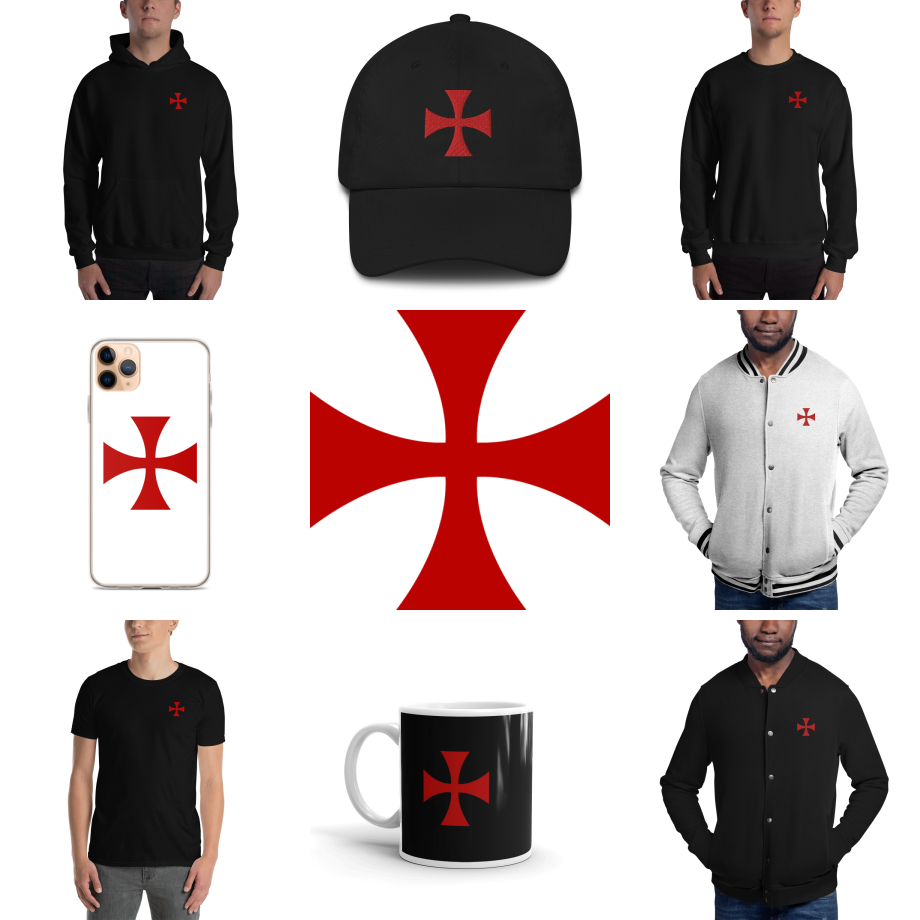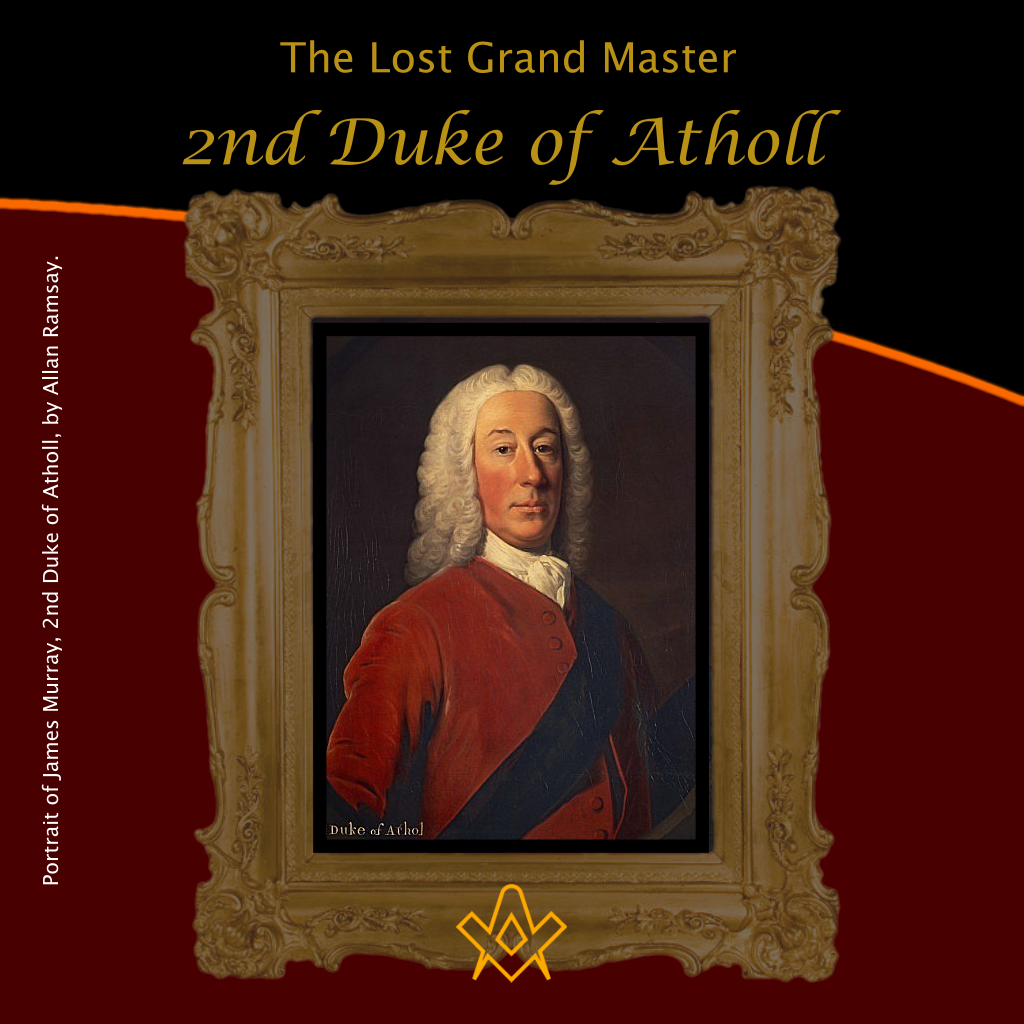It was the subject of much confusion and politicking, but from around 1600 to 1736, a tradition existed that the Sinclair family of Roslin (later St. Clairs of Rosslyn) were the hereditary heirs of the operative mason craft in Scotland, even though more urgent political matters occurring during the later months of 1637, appear to have forever stalled a final decision on competing claims.
At the formation of the Grand Lodge of Antient Free and Accepted Masons of Scotland in 1736, William St. Clair of Rosslyn formally abandoned he and his heirs claim as hereditary protectors of the operative craft, however tenuous the claim may have been in the first instance, in order to become the first Grand Master of that speculative Grand Lodge.
Masonic historian David Stevenson argues that despite their distinguished place in Scottish Masonic history, owing largely to William St. Clair’s chairmanship of the fledgling Grand Lodge, neither he or his family contributed a great deal to the operative or speculative crafts. [1]
William St. Clair (1700-1778)
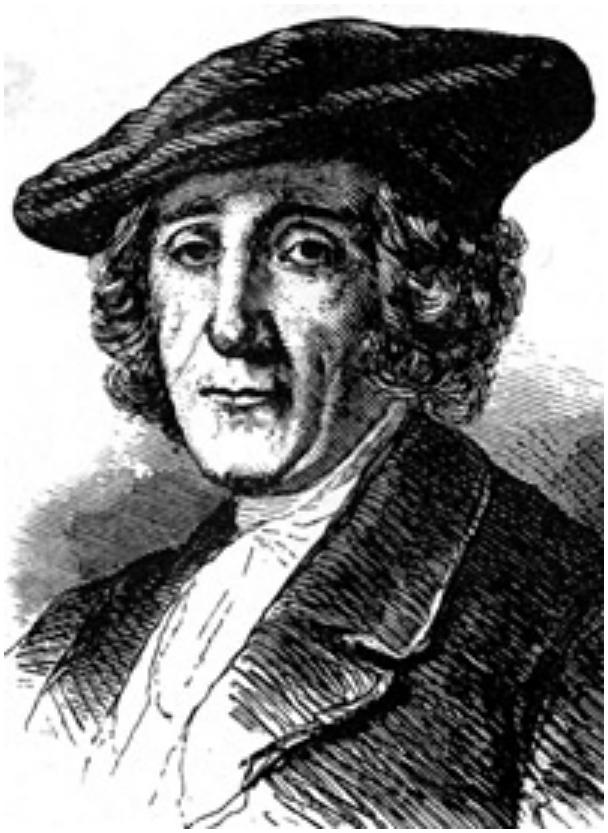
William St. Clair was a member of the Clan Sinclair
IMAGE LINKED: wikimedia Attribution 4.0 International (CC BY 4.0)
William St. Clair was a member of the Clan Sinclair. He was styled Baron of Roslin; this was not a peerage but a Scottish feudal barony.
He was a descendant of the family noted for the building of the famous Rosslyn Chapel, situated outside Edinburgh, and which has taken its place, rightly or wrongly, in Scottish Masonic lore.
He was initiated into Craft Freemasonry in Lodge Canongate Kilwinning, No. 2, Edinburgh, on 18 May, and passed to the degree of Fellowcraft on 2 June 1736.
In an extraordinary procedure, the Lodge met again on 22 November 1736, and St. Clair was in turn raised to the degree of Master Mason, before being made Junior Warden, Senior Warden, and Master of the Lodge.
St. Clair was clearly being ‘fast tracked’ in order to take up his leadership role with the Grand Lodge.
By acclamation, he was elected Grand Master Mason of the Grand Lodge of Scotland, on St. Andrews Day, 30 November 1736.
Prior to his election, St. Clair read out his renunciation of his dubious hereditary claim. He had signed the document from which he read, on 24 November. [2]
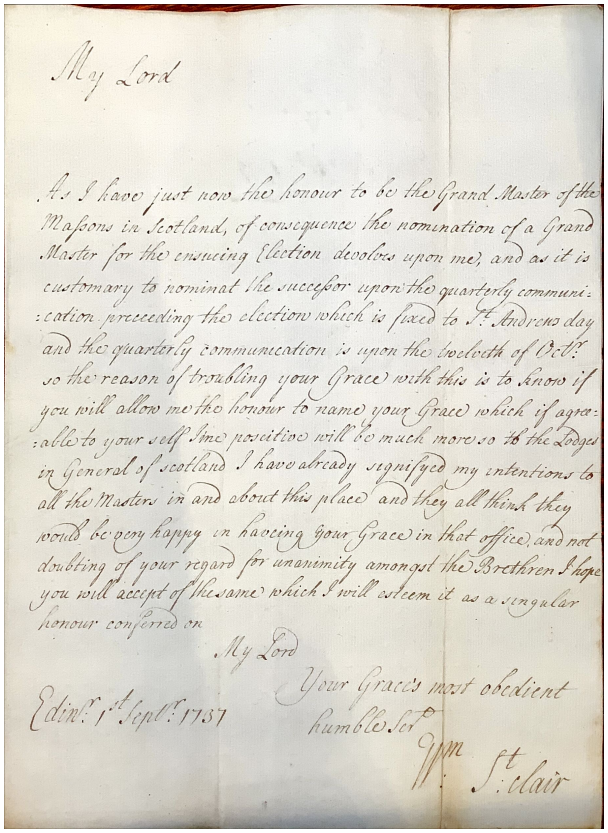
William St. Clair’s LETTER to James Murray, 2nd Duke of Atholl
IMAGE CREDIT: letter supplied by the Author, all rights reserved, no reproduction without permission from the author’
Approaching the end of his tenure as Grand Master, and as his family no longer retained hereditary claims, St. Clair began casting around for a successor.
In a letter dated 1 September 1737, he wrote to James Murray, 2nd Duke of Atholl advising him that it was the wish of both himself, and the members of the Lodges then in existence in Scotland, that the Duke succeed him as Grand Master Mason:
My Lord,
As I have just now the honour to be the Grand Master of the Masons in Scotland, of consequence the nomination of a Grand Master for the ensuing Election devolves upon me, and as it is customary to nominat (sic) the successor upon the quarterly communication preceding the election which is fixed to St. Andrew’s day, and the quarterly communication is upon the twelfth of October, so the reason of troubling your Grace with this is to know if you will allow me the honour to name your Grace, which if agreeable to yourself, I’m positive will be much more so to the Lodges in General of Scotland.
I have already signified my intentions to all the Masters in and about this place, and they all think they would be very happy in having your Grace in that office, and not doubting of your regard for unanimity amongst the Brethren, I hope you will accept of the same, which I will esteem it as a singular honour conferred on
My Lord
Your Grace’s most obedient
humble servant
Wm: St: clair
Edinburgh: 1st September 1737. [3]
James Murray: 2nd Duke of Atholl (1690-1764)
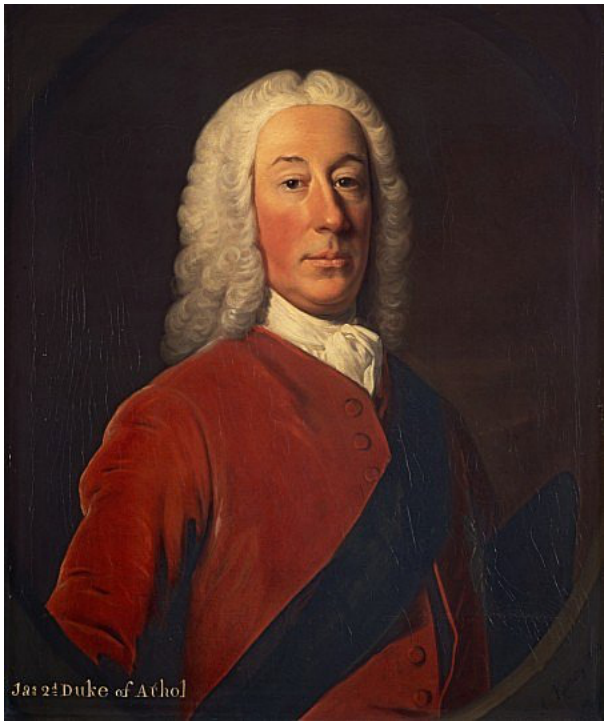
James Murray, 2nd Duke of Atholl.
IMAGE LINKED: wikimedia Attribution 4.0 International (CC BY 4.0)
Murray was born in Edinburgh on 28 September 1690, the third son of John Murray, 1st Duke of Atholl, and his wife, Lady Katherine Douglas-Hamilton.
In the normal course of events, Murray would not have succeeded to the title of Duke of Atholl, but due to taking part in the Jacobite rebellion of 1715, his older brother William, Marquess of Tullibardine, was ‘attainted’ (dishonoured/disgraced), and by an act of parliament the dukedom was passed to James.
In 1715, James was elected a member of parliament for the city of Perth, Scotland, and was successfully re-elected in 1722.
He succeeded to the peerage following the death of his father in 1724, and in another act of parliament in 1733, it was clarified that the attainder of his older brother William in 1715, did not extend to any honourable descendent of James or his late father.
In June 1724, he was made a Lord Privy Seal, succeeding Lord Ilay. In 1734, he was admitted a member of the Order of the Thistle. [4]
The Duke was the grandson of Lady Amelia Sophia Stanley, daughter of James Stanley, 7th Earl of Derby, and despite legal challenges from other family claimants, in 1736, he succeeded to the sovereignty of the Isle of Man, and the title ‘Lord of Man’ as well as the ancient barony of Strange, following the death of James, 10th Earl of Derby.
His succession to the Isle of Man brought with it many problems, including issues surrounding the prevalence of smuggling and piracy. [5]
From 1737 to 1741, the duke sat in parliament, both as an English baron, and a Scottish representative peer. During the 1745 Jacobite rebellion, and as the forces of ‘Bonnie Prince Charlie’ (Prince Charles Edward Stuart), made inroads into highland Perthshire, the Duke fled southwards to England.
During this period, his older brother, the staunch Jacobite, William, took over possession of the family seat of Blair Castle at Blair Atholl, Perthshire. James joined the army of the Duke of Cumberland and returned northwards with him in the early months of 1746. [6]
The Jacobite Rebellion of 1745, was finally, and brutally, ended at the Battle of Culloden on the 16 April 1746, the last pitched battle fought on British soil. [7]
The Duke and Freemasonry
It is not known where the 2nd Duke was initiated into Craft Freemasonry. It has been conjectured that he may have been made a ‘gentleman Mason’ in a Scottish operative lodge, or that he was initiated into an English lodge during a visit to that country.
He is recorded as attending a meeting of the Grand Lodge of England on the 17 April 1735.
A number of other Scottish noblemen were also in attendance. This meeting took place the year prior to the formation of the Grand Lodge of Scotland.
Writing of this meeting in his paper “The Dukes of Atholl and Freemasonry” read to the Quatuor Coronati Lodge, No. 2076, London, on 5 May 1967, Bro. W.G. Fisher observes:
“The Grand Lodge of Scotland was formed in the following year, but the Duke did not take any part in this, nor does he appear to have been considered for the Grand Mastership.” [8]
The discovery of William St. Clair’s letter clearly shows that the Duke was most definitely considered for the role.
Although the Lodge of Dunkeld was not formally constituted until April 1737, the present Lodge (The United Lodge of Dunkeld 14) state that their first minute book records the formation of a ‘second Lodge’ on 27 December 1734.
In July 1735, James Murray became the first of several Dukes of Atholl to be elected Master of the Lodge. He was Master of the Lodge again from 1747 to 1750. [9]
This tends to suggest that it is most likely that the duke was initiated into this, or an even earlier Lodge, in the village of Dunkeld, Perthshire.
Atholl Grand Masters
No record has yet been found of the Duke’s response to St. Clair’s request, but it was clearly negative, as on 5 October 1737, the Master of the Lodge announced in Lodge Canongate Kilwinning, No. 2, that St. Clair had now selected William Home, the 8th Earl of Home (1681-1761) as his appointed successor, and was awaiting his reply as to whether or not he accepted. [10]
There was apparently a third possible candidate, John Lindsay, 20th Earl of Crawford (1702-1749), who had been Grand Master of the Grand Lodge of England in 1734; but support for him seems to have been sparse, and the present writer has no evidence he was personally approached by St. Clair. [11]
The Earl of Home clearly declined the invitation too, as the post was eventually accepted by George Mackenzie, 3rd Earl of Cromartie, who was elected Grand Master Mason of the Grand Lodge of Free and Accepted Masons of Scotland on 30 November 1737. [12]
Given the magnitude of the Duke of Atholl’s commitments elsewhere at this particular time, it really comes as no surprise that he declined St. Clair’s invitation.
Notwithstanding, a number of his descendants were less reticent:
John Murray, 3rd Duke of Atholl, was Grand Master of the Antients Grand Lodge of England from 1771 to 1774, and Grand Master Mason of Scotland from 1773 to 1774.
John Murray, 4th Duke of Atholl was Grand Master of the Antients Grand Lodge of England, from 1775 to 1781, and then again, from 1791 to 1813, and Grand Master Mason of Scotland, from 1778 to 1780.
George Murray, 6th Duke of Atholl (formerly Lord Glenlyon), was Grand Master Mason of Scotland for an extensive period between 1843 and 1864.
John Stewart-Murray, 8th Duke of Atholl (formerly Marquess of Tullibardine), was Grand Master Mason of Scotland from 1909 to 1913. [13]
James Murray, 2nd Duke of Atholl, died at Dunkeld, Perthshire, on 8 January 1764. [14]
Further Resources
United Lodge of Dunkeld
Over a period of 200 years no less than five Dukes of Atholl were to serve as Right Worshipful Masters of the Lodge of Dunkeld. St. John as it became known.
The 6th Duke, Master here for 18 years until 1864, was also Grand Master Mason of Scotland.
This page is an attempt to detail and honour the special relationship The Dukes of Atholl have with Freemasonry and in particular with the history of Freemasonry in Dunkeld.
Footnotes
Research
[1] David Stevenson, The Origins of Freemasonry, (Cambridge University Press, 1988), 67.
[2] Robert L.D. Cooper, The Rosslyn Hoax: Viewing Rosslyn Chapel from a new perspective, (Lewis, 2006), 96-97. Allan Mackenzie, History of the Lodge Canongate Kilwinning, No. 2: Compiled from the records 1677-188, (James Hogg, Edinburgh, 1888), 32-37.
[3] Blair Castle archives, NRAS234/Box46(11)101. The letter was discovered by the author and Bro. John Belton whilst researching the archives on 15 June 2022.
[4] “James Murray: 2nd Duke of Atholl,” https://en.m.wikipedia.org/wiki/James_Murray_2nd_Duke_of_Atholl , accessed 17 January 2023.
[5] “The Atholl Papers: The 2nd Duke of Atholl’s Inheritance of the Isle of Man,” https://www.imuseum.im/the-2nd-duke-of-atholls-inheritance-of-the-isle-of-man/ accessed 17 January 2023.
[6] “James Murray: 2nd Duke of Atholl,” https://en.m.wikipedia.org/wiki/James_Murray_2nd_Duke_of_Atholl , accessed 17 January 2023.
[7] “The Battle of Culloden,” National Trust for Scotland, https://www.nts.org.uk/visit/places/culloden/the-battle-of-culloden
[8] Bro. W.G. Fisher, “The Dukes of Atholl and Freemasonry” in Ars Quatuor Coronaturum, Vol. 80, (Quatuor Coronati Lodge, No. 2076, London, 1980) 59.
[9] United Lodge of Dunkeld 14, Lodge history, https://www.unitedolodgeofdunkeld.org/about , accessed 17 January 2023.
[10] Allan Mackenzie, History of the Lodge Canongate Kilwinning, No. 2: Compiled from the records 1677-1888, (James Hogg, Edinburgh, 1888), 38.
[11] Robert L.D. Cooper, The Rosslyn Hoax: Viewing Rosslyn Chapel from a new perspective, (Lewis, 2006), 97.
[12] Allan Mackenzie, History of the Lodge Canongate Kilwinning, No. 2: Compiled from the records 1677-1888, (James Hogg, Edinburgh, 1888), 39.
[13] United Lodge of Dunkeld 14, Lodge history, https://www.unitedolodgeofdunkeld.org/about , accessed 17 January 2023.
[14] “James Murray: 2nd Duke of Atholl,” https://en.m.wikipedia.org/wiki/James_Murray_2nd_Duke_of_Atholl , accessed 17 January 2023.
Article by: Kenneth C. Jack
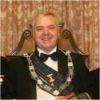
Kenneth C. Jack FPS is an enthusiastic Masonic researcher/writer from Highland Perthshire in Scotland.
He is Past Master of a Craft Lodge, Past First Principal of a Royal Arch Chapter, Past Most-Wise Sovereign of a Sovereign Chapter of Princes Rose Croix.
He has been extensively published in various Masonic periodicals throughout the world including: The Ashlar, The Square, The Scottish Rite Journal, Masonic Magazine, Philalethes Journal, and the annual transactions of various Masonic bodies.
Kenneth is a Fellow of the Philalethes Society, a highly prestigious Masonic research body based in the USA.

The Atholl Lodges
By: Robert Freke Gould
Leopold is delighted to publish this classic book as part of our extensive Classic Library collection. Many of the books in our collection have been out of print for decades, and therefore have not been accessible to the general public.
The aim of our publishing program is to facilitate rapid access to this vast reservoir of literature, and our view is that this is a significant literary work, which deserves to be brought back into print after many decades.
The contents of the vast majority of titles in the Classic Library have been scanned from the original works. To ensure a high quality product, each title has been meticulously hand curated by our staff.
This means that we have checked every single page in every title, making it highly unlikely that any material imperfections – such as poor picture quality, blurred or missing text – remain.
When our staff observed such imperfections in the original work, these have either been repaired, or the title has been excluded from the Leopold Classic Library catalogue.
As part of our on-going commitment to delivering value to the reader, within the book we have also provided you with a link to a website, where you may download a digital version of this work for free.
Our philosophy has been guided by a desire to provide the reader with a book that is as close as possible to ownership of the original work.
We hope that you will enjoy this wonderful classic work, and that for you it becomes an enriching experience.
If you would like to learn more about the Leopold Classic Library collection please visit our website at www.leopoldclassiclibrary.com
Recent Articles: Kenneth C. Jack
 Observations on the History of Masonic Research Archaeology is often associated with uncovering ancient tombs and fossilized remains, but it goes beyond that. In a Masonic context, archaeology can be used to study and analyze the material culture of Freemasonry, providing insight into its history and development. This article will explore the emergence and evolution of Masonic research, shedding light on the challenges faced by this ancient society in the modern world. |
 Anthony O'Neal Haye – Freemason, Poet, Author and Magus Discover the untold story of Anthony O’Neal Haye, a revered Scottish Freemason and Poet Laureate of Lodge Canongate Kilwinning No. 2 in Edinburgh. Beyond his Masonic achievements, Haye was a prolific author, delving deep into the history of the Knights Templar and leaving an indelible mark on Scottish Freemasonry. Dive into the life of a man who, despite his humble beginnings, rose to prominence in both Masonic and literary circles, leaving a legacy that continues to inspire. |
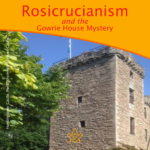 Rosicrucianism and the Gowrie House Mystery Unearth the mystifying intersections of Rosicrucianism and the infamous Gowrie House Mystery. Dive into speculative claims of sacred knowledge, royal theft, and a Masonic conspiracy, harking back to a fateful day in 1600. As we delve into this enthralling enigma, we challenge everything you thought you knew about this historical thriller. A paper by Kenneth Jack |
 Thomas Telford's Masonic Bridge of Dunkeld Of course, there is no such thing as a ‘Masonic Bridge’; but if any bridge is deserving of such an epithet, then the Bridge of Dunkeld is surely it. Designed by Scotsman Thomas Telford, one of the most famous Freemasons in history. |
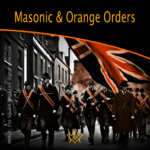 The masonic and orange orders: fraternal twins or public misperception? “Who’s the Mason in the black?” |
 Kenneth Jack's research reveals James Murray, 2nd Duke of Atholl – the 'lost Grand Master' |
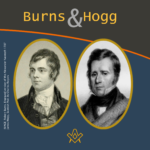 An Oration delivered to the Annual Burns and Hogg Festival, at Lodge Canongate Kilwinning, No. 2, Edinburgh, on 24 January 2018. By Bro. Kenneth C. Jack, FSAScot FPS, Past Master, Lodge St. Andrew, No. 814, Pitlochry. |
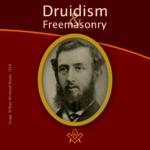 William Winwood Reade was a Scottish philosopher, historian, anthropologist, and explorer born in Crieff, Perthshire, Scotland. The following article by Kenneth Jack, provides some hints that William may have been a Freemason, but there is presently no definitive evidence he was. |
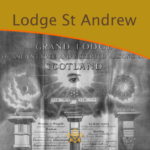 What's in a name? A brief history of the first Scottish Lodge in Australia - By Brother Kenneth C. Jack, Past Master, Lodge St. Andrew, No. 814, Pitlochry |
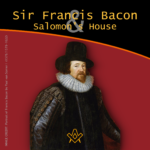 Sir Francis Bacon and Salomon’s House Does Sir Francis Bacon's book "The New Atlantis" indicate that he was a Rosicrucian, and most likely a Freemason too? Article by Kenneth Jack |
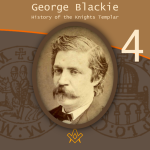 George Blackie – The History of the Knights Templar P.4 The final part in the serialisation of George Blackie's 'History of the Knights Templar and the Sublime Teachings of the Order' transcribed by Kenneth Jack. |
 George Blackie – The History of the Knights Templar P.3 Third part in the serialisation of George Blackie's 'History of the Knights Templar and the Sublime Teachings of the Order' transcribed by Kenneth Jack. |
 George Blackie – The History of the Knights Templar P.2 Second part in the serialisation of George Blackie's 'History of the Knights Templar and the Sublime Teachings of the Order' transcribed by Kenneth Jack. |
 George Blackie – The History of the Knights Templar P.1 First part in the serialisation of George Blackie's History of the Knights Templar and the Sublime Teachings of the Order – by Kenneth Jack |
 Little known as a Freemason, Bro Dr Robert ‘The Bulldog’ Irvine remains a Scottish rugby legend, and his feat of appearing in 10 consecutive international matches against England has only been surpassed once in 140 years by Sandy Carmichael. |
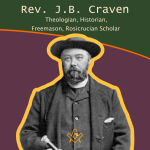 Rev. J.B. Craven: Theologian, Historian, Freemason, And Rosicrucian Scholar Archdeacon James Brown Craven is one of those unsung heroes of Scottish Freemasonry about whom very little has been previously written – here Kenneth Jack explores the life and works of this remarkable esoteric Christian. |
 Discover the powerful family of William Schaw, known as the 'Father of Freemasonry' |
 This month, Kenneth Jack invites us to look at the life of Sir William Peck; - astronomer, Freemason and inventor of the world's first electric car. A truly fascinating life story. |
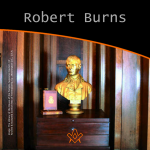 A Tribute to Scotland's Bard – The William Robertson Smith Collection With Burns' Night approaching, we pay tribute to Scotland's most famous Bard – The William Robertson Smith Collection |
 The Joy of Masonic Book Collecting Book purchasing and collecting is a great joy in its own right, but when a little extra something reveals itself on purchase; particularly with regards to older, rarer titles.. |
 Masons, Magus', and Monks of St Giles - who were the Birrell family of Scottish Freemasonry? |
 The 6th Duke of Atholl - Chieftain, Grand Master, and a Memorial to Remember In 1865, why did over 500 Scottish Freemasons climb a hill in Perthshire carrying working tools, corn, oil and wine? Author Kenneth Jack retraces their steps, and reveals all. |
 Charles Mackay: Freemason, Journalist, Writer Kenneth Jack looks at life of Bro Charles Mackay: Freemason, Journalist, Writer, Poet; and Author of ‘Tubal Cain’. |
 A Mother Lodge and a Connection Uncovered, a claim that Sir Robert Moray was the first speculative Freemason to be initiated on English soil. |
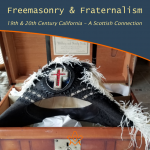 What is it that connects a very old, well-known Crieff family, with a former President of the United States of America? |
 The life of Bro. Cattanach, a theosophist occultist and Scottish Freemason |
 The Mysterious Walled Garden of Edzell Castle Explore the mysterious walled garden steeped in Freemasonry, Rosicrucianism, and Hermeticism. |
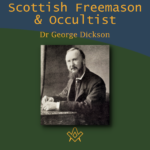 Dr. George Dickson: Scottish Freemason and Occultist Bro. Kenneth explores the life of Dr George Dickson a Scottish Freemason and Occultist |
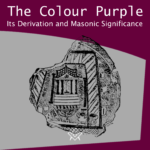 The Colour Purple - Its Derivation and Masonic Significance What is the colour purple with regards to Freemasonry? The colour is certainly significant within the Royal Arch series of degrees being emblematical of Union. |
 Bridging the Mainstream and the Fringe Edward MacBean bridging mainstream Freemasonry with the fringe esoteric branches of Freemasonry |
 Freemasonry in the Works of John Steinbeck We examine Freemasonry in the Works of John Steinbeck |
 Renegade Scottish Freemason - John Crombie Who was John Crombie and why was he a 'renegade'? |
 Scottish Witchcraft And The Third Degree How is Witchcraft connected to the Scottish Third Degree |
masonic knowledge
to be a better citizen of the world
share the square with two brothers

click image to open email app on mobile device
